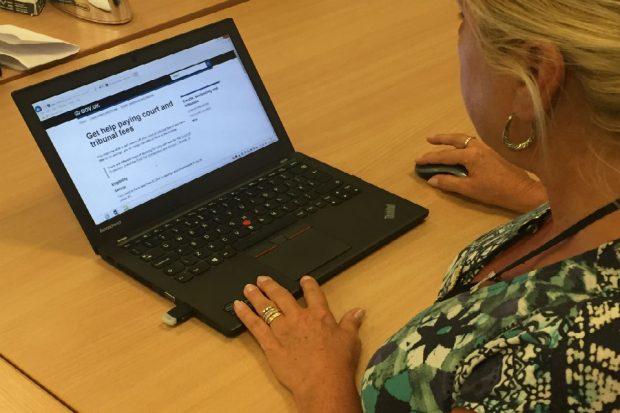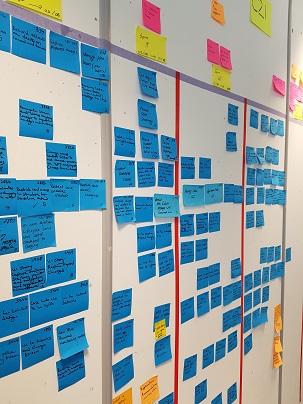Digital services
A blog post from Andrew Hyland who led the HMCTS Help with Fees project. The Help with Fees (also known as fee remission) service ensures the courts and tribunals are available and accessible to those who need them – regardless of their personal circumstances. If you apply for fee remission and are on certain benefits or on a low income you may not have to pay a court or tribunal fee, or you may get some money off.
Agile delivery allows for the iterative and evolving design and implementation of services to meet user needs – and this is a good thing. The challenge this can face, however, is that designs can focus on the Minimum Viable Product and so when products start scaling or have additional contexts applied, the system can need substantial re-engineering or re-implementation to address these challenges.
Over the last year, we’ve recruited 13 user testers into the Criminal Justice System Common Platform Programme. Over that time, we’ve experimented with a number of on-boarding processes, with varying results. We needed to get people up to speed quickly about the technologies that we’re using, the application that we’re building and the domain language and context that goes with them.
On 22 September 2016 I gave a presentation to the National Digital Practitioners’ Working Group summarising interim findings of the two-factor authentication survey which I mentioned in my last blog post. In summary the majority of practitioners have access to a smart phone, would be able and willing to install an app on their smart phone to provide an access code.
One of GDS’s design principles is ‘Do the hard work to make it simple’. This is directed at transformational programmes like the Common Platform and the delivery teams working within it. Right now, those of us working in the Common Platform Programme are living out the reality of this principle – we’re working hard to uncover the essence of the Criminal Justice System (CJS) so that we have clean, clear service design that feels simple to use.
This blog post from Leanne Galbraith details information from the National Digital Practitioners’ Working Group on 28 July in which we presented a session that sought views of defence practitioners in relation to two-factor authentication. Leanne also details information from the National Digital Practitioners’ Working Group on 25 August 2016 in which we presented a session on the importance of security.
Like many government departments and arm length bodies, the CJS Common Platform Programme (CJSCP) has adopted Agile processes and put it at the heart of what we do. From my experience while working in CJSCP, I have detailed in this blog post a number of ‘danger signs’ that may indicate your organisation is not embracing Agile ways of working.
On the 13 July 2016 our Common Platform User Research team attended Liverpool Crown Court to interview three defence practitioners. The practitioners were asked a number of questions about their current ways of working. I’ve detailed a summary of their answers in this blog post.
I’m Adam Gwinnett, the Architecture Lead for the CJS Common Platform Programme. I’d like to take some time to explain how we are following the Agile software methodology in the development and delivery of our products and services.
Hello, my name is Hywel Hughes and I’m Head of Welsh Language Services at HMCTS. As more and more of our services become available digitally, it’s important these services become equally accessible to those who wish to interact with us through the Welsh language.



